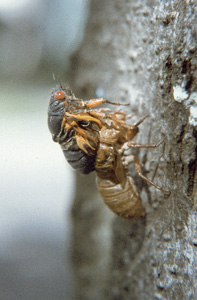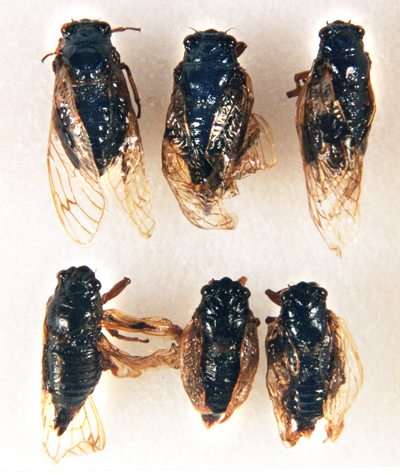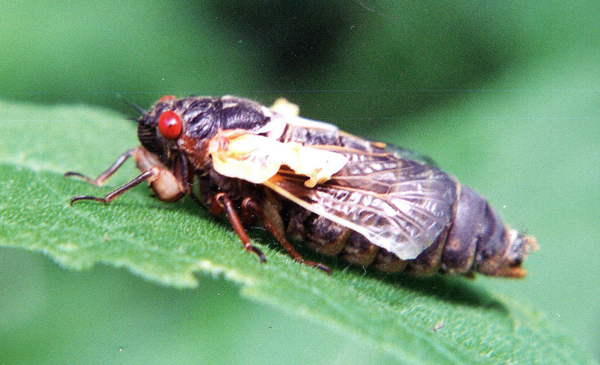Molting, or ecdysis, is a dangerous time for any insect. Before molting, in insect must find a secure perch where it will remain until is completes the process. Molting insects must split their skins, which also serve as their skeletons. Then, they must use what are effectively hydraulic movements to pull their bodies out of their old skins and expand their entire bodies, including delicate structures such as wings (see Salcedo et al. 2023); sometimes this process involves significant changes to the insect’s general shape. During this process, the insect is soft, vulnerable, and unable to make normal movements. Once the new skeleton has hardened, the insect cannot change its shape. Molting can fail at any stage.

Cicadas sometimes fail to properly inflate their wings after molting; such individuals can be found in low vegetation in any emergence.


Possible explanations for molting failure include crowding (since many molting insects in a small space may knock each other down), disturbance (such as winds or storms that knock molting insects from their perches), resource-starved nymphs, or pesticide and/or lawn chemical use.
White et al. (1979) documented mortality rates of over 30% of nymphs attempting to molt in a suburban area, and they attributed these high failure rates to the effects of extreme crowding. Cooley and Holmes (2023) attributed high failure rates to the direct effects of crowding, noting that crowded nymphs dislodge other molting nymphs or sometimes wound them by puncturing their exoskeletons.
Cooley, J. R., and G. Holmes. 2023. Periodical cicadas (Magicicada spp.): Predator satiation, or too much of a good thing? The Great Lakes Entomologist 56: 121-125.